Resumen ejecutivo 'FUERZA 35'
The Army has the responsibility to keep its forces ready and efficient for today's and tomorrow's combats. To comply with this objective, it has started a process of change named 'Fuerza 35'.
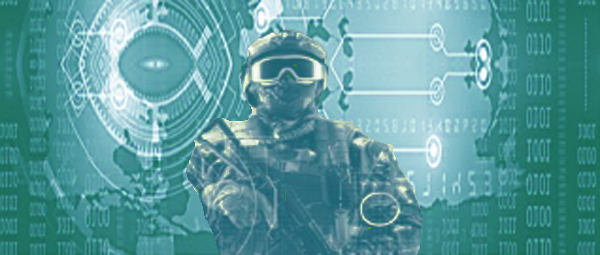
1.- INTRODUCTION
'Fuerza 35' is the Army solution to respond to the military planning process lead by the Chief of the Army Staff (JEMAD), with the goal of keeping Armed Forces efficient and proportioned to the level of ambition. Design, experimentation and equipment are priorities in which all the effort of our Army is focused.
'Fuerza 35' is the Army solution to respond to the military planning process
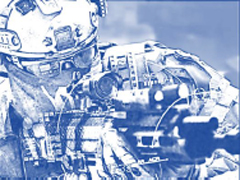
To orientate Planning, the Army General Chief of the Army Staff has defined its vision:
'The 2035 Army, essential component of the Joint Force, will be capable of constituting flexible and unified operational organisations, provided with technologically advanced means and constituted by highly motivated and prepared personnel. It will be capable of operating in all kind of environments and of integrating in multinational structures to ensure the protection of the population and the control of the territory and resources.
It will be a decisive instrument in the attainment of free and safe spaces in the advocacy of the interests of Spain wherever and whenever it is needed.’
This document sets forth the basis and main lines of development of the 'Fuerza 35' initiative. In it divided into five parts. Firstly, the factors that trigger the change are explained. Secondly, it is described what 'Fuerza 35' consists of. Thirdly, the missions for which 'Fuerza 35' is conceived are named. A fourth part briefly describes how change is faced, namely, the phases and intermediate stages.
Design, experimentation and equipment are priorities in which all the effort of our Army is focused.
Finally, the main means necessary for '35 Brigade' as reference unit for 'Fuerza 35' are detailed.
2.- REASONS FOR CHANGE: WHY IS IT NECESSARY?
The development of a Force with a 2035 horizon is explained by five main factors that trigger the change: substantial changes in the Security and Defence environment, maintain the necessary consistence with the Defence objectives, interoperability with the countries in the Alliances, the appearance of new disruptive technologies, and the adaptation to the fast pace of innovation.
Security and Defence environment. Technology and geopolitical competition are changing the character of war. In this environment, the Spanish Army faces a dramatic change in the environment and needs to strengthen its capacities in order to be useful and follow our constitutional mandate, guaranteeing the efficiency of our action when a military response is required.
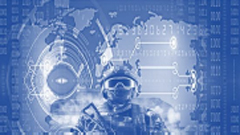
The competition among States, together with the proliferation of non-state groups provided with great military capacities in geographical locations that directly affect our security has escalated worrying levels of intensity lately, and evolves quickly and aggressively. The international setting is immerse in a permanent process of indirect confrontations of small entity through difference means of influence. This rapid competition among powers wraps the combat in the fight for the monopoly of critical technologies (Artificial Intelligence is an example) to obtain a decisive competitive advantage in the global market and the battlefield.
There is a very high risk that the Army falls back if it does not plan the necessary human, material and financial Defence resources to contribute, at a joint Defence level, to prevent all kind of interferences and maintain the current protection and security level of the Spanish citizens.
'Fuerza 35' will provide the Joint Force will unique military capacities, and it must be design with precision, efficiency and consistency with that established in its Military Planning Directive.
Coherence with the Defence strategic objectives. 'Fuerza 35' will provide the Joint Force will unique military capacities, and it must be design with precision, efficiency and consistency with that established in its Military Planning Directive.
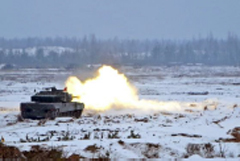
Interoperability with the countries in the Alliances. Nowadays no country can preserve its security by itself. Interdependence in the international community among allied countries will be greater and deeper. Belonging and efficient operational integration by means of interoperable military capacities in the Alliances Spain belongs to cannot be attained without effort. This will allow us to be a useful instrument for our allies, show determined commitment and strengthen the necessary confidence in our Army for a credible persuasion.
The main countries in the NATO and EU defence are dealing with significant transformations in their Armies, incorporating very advanced disruptive technologies, maintaining permanent restructuring plans with 2035 horizons, and they are doing it at a very fast pace, that has nothing to do with the long processes of change back in the past.
In order to be able to operate, today and in the future, with our allies in equal conditions in the short periods of time demanded at a political and social level, it is necessary for 'Fuerza 35' to be fully interoperable with capability packages such as 'Plug and Play'.
Appearance of new disruptive technologies. The accelerated technological development is changing dramatically the character of war as we know it. Technological innovation is taking place at increasingly short cycles, at a faster pace, with new technologies with are more disruptive, more revolutionary, and mainly at a civilian level. It is necessary to progress at the same pace as the main allied countries and to be able to incorporate the necessary technological advances an innovations in order not to fall behind.
In order to have a fully operational force it is mandatory to be in contact with the environment where the innovation is happening, identify it and incorporate useful devices at a much greater speed than that we are used to in our current purchasing process.
To keep a military advantage together with our allies, the new capacities of 'Fuerza 35' must incorporate data processing applications, high connectivity, intelligent robotics, quantum and neural network technologies, autonomy, Artificial Intelligence, nanotechnology, systems of extreme precision weapons, training in machines, biotechnology, additive technology, among the main technologies identified nowadays.
The urgent need for results and the immediate application of some of the aforementioned technologies to provide the land forces deployed in operations abroad with military capacities, on time, before they are technically obsolete when they enter into service, requires an agile evolution of the systems of purchasing weapons and technologies that has nothing to do with the current ones. The programmes of today and tomorrow must be very flexible and incorporate the latest technological advances at any point of the life cycle.
Adaptation to the fast innovation pace. The capacity of our land forces is based, among other aspects, on its operational resources. 'Force 35', as platform to transform these resources in modern and advanced means, requires the creation of synergies with the business network.
An important concern is that a major part of the research and technology useful for the military is quickly developing in the private sector, so the possibility of purchasing these technologies is not exclusive to the U.S. This situation forces to an extraordinary follow-up effort of the technological advances.
In order to have a fully operational force it is mandatory to be in contact with the environment where the innovation is happening, identify it and incorporate useful devices at a much greater speed than that we are used to in our current purchasing process. We aim to working in line with top-level academic talent provided by Spanish universities, as well as with our Defence Industry and the innovative private business sector.
3.- DEFINING 'FUERZA 35': WHAT DOES IT CONSIST OF?
As a consequence of the aforementioned factors, the Army has started a continuous process to have a necessary force available. 'Fuerza 35' is a long-term project that aims at transforming the Army forces with a horizon longer than 15 years.
We aim at working in tune with the first-level academic talent provided by the Spanish universities, as well as with our Industry of Defence and an innovative private commercial sector.
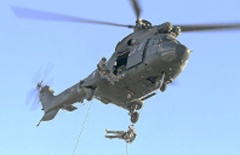
The transformation will affect all the Units in the land forces. First, the unit of reference, the '35 Brigade' will be transformed. Later, the transformation will spread to the rest of the Units that make up the Force.
The new model of Force aims at a reduction of personnel enabled by the progressive incorporation of new technologies to the organic structures. Intelligence resources can be found among the technologically advanced resources (with RPAS and deep understanding of Big Data Analysis) and the future 8x8 combat vehicle, with great firepower and situational awareness capacities that would allow to face the hybrid threat efficiently.
The transformation will affect all the Units in the land forces. First, the unit of reference, the '35 Brigade' will be transformed.
The design of 'Fuerza 35' will consist of the optimisation of organic structures for the combat, having team cohesion as a key factor to guarantee efficiency, which allow adaptation to the operational environment at all times and will put the necessary capacities at the disposal of the operational structure.
'Fuerza 35' will be integrated by highly qualified and motivated personnel, whose efficiency will still be based on the values of our institution transmitted by means of the example and leadership capacity and reinforced with the development of initiative and permanent availability for the service.
'Fuerza 35' will be conceived to act in the wide spectrum of the conflict, from effort of lesser intensity, such as support to civilian forces, medium intensity, such as non-linear battlefields in wide spaces and lack of infrastructures, and high intensity, such as urbanised areas with latest generation weapon systems. Confrontation can be simultaneous or successive in its area of responsibility with conventional hostile forces, irregular forces, terrorist and organised crime groups, or any other actor with obscure interests that poses a threat to Security.
4.- OBJECTIVES: IN WHAT MISSIONS IS 'FUERZA 35' NECESSARY?
'Fuerza 35' will aim at complying with its main missions, as part of the Joint Force, with the necessary degree of efficiency to serve as fundamental tool in the foreign police of the Government of Spain, preserving at all times our expeditionary character, high availability, as well as interoperability to be able to act in the framework of the agreements signed with our allies.
In the next 15 years, field battle will still be the centre of gravity of the Joint Force operations. ‘Fuerza 35’ will be key to succeed. Land forces will be indispensable, and ‘Fuerza 35’will provide incontestable benefits to the joint operational structures with the accomplishment of four main missions.

First mission, allow the control of the enemy territory and population, something that no other military instrument allows. In the rest of domains, air, sea, space or cyberspace, impact can be made on what happens in the land, but it cannot be controlled. Only land forces have the capacity to control the population and the territory. It is in the land where the population lives, where relevant events take place and where the political, economic and financial decision centres are located.
Field battle will still be the centre of gravity of the Joint Force operations. ‘Fuerza 35’ will be key to succeed
‘Fuerza 35’ as tangible expression of the future land forces, will perform the required control thanks to its greater combat capacity, precision, multi-domain manoeuvre, synchronising its air-ground action with the intervention in the virtual (cyberspace) and cognitive (perception) domains, and will add fast rate and high intensity never seen before, substantially minimising damage in infrastructures and loss of human lives from the enemy, the local population our own.
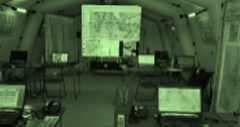
The second mission will be to conduct quick and decisive land operations. In all armed conflicts, it is always necessary a last stage in which to occupy or threaten to occupy the enemy territory and control its population. It is normally the key element to bring the conflict to an end.
‘Fuerza 35’ will incorporate emergent and disruptive technologies that will allow it to operate faster. Everything will accelerate, at a fast pace, with neither operational nor tactical breaks. This will show results in a very short term.
Third mission, land operations are also a show of force and commitment with our allies. No other contribution shows such as a high degree of commitment with a common cause as it the involvement of land forces. Big challenges are global, and no country is capable of facing them on its own. ‘Fuerza 35’ will be very useful at an international level by means of an easy and quick integration into multinational structures, with instantly technical interoperability, as well as human and process integration.
Persuasion is the fourth mission. Land forces as a key persuasive element in the end of a conflict are an excellent instrument. No enemy actor will be attracted to engage in operations with a modern, motivated and technologically engaged force that operates with great speed, lethality and precision, as it will be the case of an Army integrated by Brigades and other ‘35 model’ operational structures. It is undoubtedly a credible and solid force of persuasion.
5.- LINES OF ACTION: HOW WILL THE CHANGE BE MADE?
The Army has structured its transformation in three stages, not necessarily successive. In fact, it will be necessary that the different phases will overlap at some point.
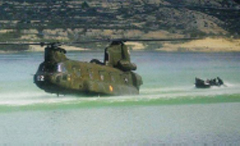
Nowadays the first two stages are in operation. The first one, the ‘phase of conceptual studies’ is identifying, drafting and debating a new theory on the use of the force, on what the new structures will be like, as well as the necessary materials and technologies to carry out the new plans.
Debate and identified needs have been transferred to university and industry levels. It is a collaborative process of putting ideas in common. On the other hand, after presenting its new concepts of combat, the Army has explained its needs. Simultaneously, the University and the industry analyse its feasibility in different time horizons.
It is in the land where the population lives, where relevant events take place and where the political, economic and financial decision centres are located.
At the same time, the second ‘experimentation’ phase of the conceptual part started in November 2018 with new organic proposal, as well as new available materials and technologies. During this experimental phase, the new concepts, structures and technologies will be tested with simulation, real exercises or command posts. An important aspect to be taken into account is that time of peace the changes do not benefit from the experimental information acquired at war, essential to conduct a high-quality innovation process. Thus, experimentation will be mandatory also in conflict settings during those operation abroad in which our Army takes part.
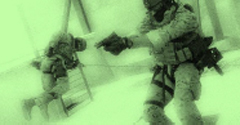
Although the opportunities to experiment in real operations provide high quality, these are limited by the duration of deployment periods. On the contrary, the positive part of experimental work during preparation in national territory has the advantage of having more time to analyse and implement innovative changes. Furthermore, more risks can be assumed than in operations with no need to put human lives at risk.
From December 2019, moment when the results of the first part of the experimentation will have been obtained, a third stage will begin, a 'consolidation' of everything that has functioned correctly.
The emerging and disruptive technologies will continue changing exponentially between 2019 and 2035. In fact, the technology available in 2035 will be significantly different to that acquired at the beginning of the '20s, and in some case, the latter will have become obsolete.
To reach the desired final status of a Force which is technologically advanced, with greater combat capacity and personnel according to the real needs and possibilities by 2035 it is necessary to progressively reach intermediate milestones in 2024 and 2030.
In 2024 we will generate a possible '35 Brigade' force (with 8x8 platforms) together with a series of supporting military capacities. Nowadays, there are some committed programmes, and a new system of capacities is in process of implementation. In 2030, we will have an advanced force, closer to the final status with highly advanced technologies.
By 2035 we will have finished the transformation of our land forces, adjusted to the current possibilities and capable enough to gain military advantage that will allow them to successfully face any challenge coming from the operational environment. The transformation of 'Fuerza 35', with two intermediate and a final status is an exercise of obliged responsibility, one more guarantee for the Army for the compliance of our constitutional mandate to protect the citizens, their freedom and national interests.
6.- THE MEANS: '35 BRIGADE'
The Spanish land forces consider the Brigade a key element and a unit of reference for the generation of operational forces with its organic means.
'35 Brigade' will be the unit of reference of 'Fuerza 35'. Its main feature is that it will be based on technology, with an organic structure that integrates all combat functions at a tactical level, offering greater combat power with lesser number of personnel. These Brigades will be suitable for its use in the whole spectrum of the conflict.
The transformation of 'Fuerza 35', with two intermediate and a final status is an exercise of obliged responsibility, one more guarantee for the Army in the compliance of our constitutional mandate to protect the citizens, their freedom and national interests.
6.1.- Characteristics of '35 Brigade'
Integral combat system. The Brigade is a complex combat system that needs all its military capacities to be used.
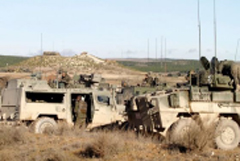
The Army considers conceptually each one of its '35 Brigades' as a unique package called 'integral combat system' that includes everything necessary at its level. Having complete Brigades requires to change the approach in the assignment of credits for acquisition, so that the necessary resources are provided to complete the Brigades in planning cycles, so all the Brigades will be provided with all the military capacities. In that regard, the Army has taken a first step, quantifying the needs to complete the Brigades resources and instructors in the document 'Estimates and Long-term Proposals' that define the Long Term Strength Objective of the Defence Planning Process.
Operational and organic structures. The new brigades will be structured, organised and trained under peace circumstances, as similar as possible as they will be organised in combat.
The organic structures will be prepared to be used and to be operative, which will allow a quick transition and take advantage of the cohesion of unit during training periods.
They will be designed to create efficient operational structures, quick enough, sustainable and decisive to fight with guarantees to succeed. They will also count with the necessary capacities to anticipate and surprise the enemy.
Interoperability. '35 Brigade' will be able to interoperate with the Joint Force and allied forces. Its high technical level will allow it to cooperate with other actors of different nature. In order to be useful, it will be provided with highly advanced technology orientated to meet the criteria.
The new brigades will be structured, organised and trained under peace circumstances, as similar as possible as they will be organised in combat.
'35 Brigade' as expeditionary unit will deploy and operate thanks to a renewed modular organisation, latest trend technologies and new procedures. It will be capable of operating and synchronising simultaneous multi-domain operations in traditional land and air spaces and in the new fields (cyberspace and cognitive).
By means of a new 'Mission Command', a new Command style will be promoted, based on an initiative with greater responsibilities to accomplish the mission, making profitable the training and qualification of the leaders and all soldiers at different levels of the structure, managing complexities more efficiently, and hastening the pace in the decision-making and execution of the operations.The command of units will be extraordinarily complex. It will necessary a strong leadership, highly qualified, but also capable of trusting subordinates and delegating part of the tasks to optimise the competences of the whole team.
Speed in the operations. The application of 'Mission Command’, together with the new technological possibilities, will accelerate both the decision making and the operation executing processes.
Deception and physical and virtual concealment will be essential elements to guarantee surveillance and protection, and to mitigate the risk in the mission.
Technology will also have a positive impact on the decrease of logistical print in the battlefield, and the reduction of personnel in the tasks that can be carried out automatically or autonomously.
6.2.- Possible organisation of '35 Brigade'
'35 Brigade' will be integrated by three Combat Groups (CGBT) capable of operating independently, and a Core of Brigade Troops (NTB). Each Combat Group will be an Infantry Battalion Unit reinforced with the necessary support for the accomplishment of the mission assigned: intelligence, fire, logistics, engineers, communications, etc. The Core of Brigade Troops will gather all the operational units of the Brigade necessary in the inter-weapon combat: Artillery Group. Engineer Battalion, Logistical Group, Cavalry Group, Intelligence Unit (ISTAR), and Transmissions Unit, among others.
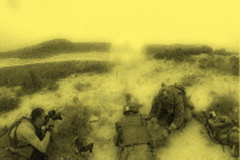
35 Brigade' will be able to interoperate with the Joint Force and allied forces. Its high technical level will allow it to cooperate with other actors of different nature
The military personnel that will make up the Brigade will be an integrated team, inferior in number to the current Brigades. It will have several hundreds of platforms of different kinds (manoeuvring, intelligence, logistics, etc.). Among them, the main one will be the 8x8 wheeled Dragon combat vehicle. The logistical capacity of the Brigade will increase to strengthen its survival and periods of autonomy.
The Combat Group will be made of different Combat Subgroups (S/GCBT), and will be provided with several 8x8 wheeled Dragon combat vehicles (six different versions) and will have organic means of intelligence (for example, different types of RPAS).
Finally, the combat subgroup, which is a group of units aimed at operating autonomously with the necessary support, will be integrated by around a hundred soldiers, will have 8x8 wheeled Dragon combat vehicles (four different versions) and logistical autonomy designed to guarantee its survival for a short period of time.
6.3.- Experimental Brigade (BRIEX)
For a project as important as 'Fuerza 35', the Chief of the Army Staff has designated the 2nd Spanish Legion Brigade 'King Alfonso XIII' as 2035 Experimental Brigade, responsible of conducting the experimentation activities, necessary to draw conclusions and validate hypotheses that can later be used in the conceptual development of '35 Brigade' and Logistical Support to Combat.
For some months, the actions have involved several Commands in the purchase of materials, training, analysis of identified lessons and making of doctrine and procedures.
The application of 'Mission Command' together with the new technological possibilities will hasten the pace in decision making and operation executing.
The conclusions progressively reached in the experimentation stage will be applied to all the Army Brigades, that will transform into the new model cyclically. The final status of the project will the new generation Brigades, all of them with similar combat capacities to face the 2035 challenges.
6.4.- Combat Functions of '35 Brigade'
Command. '35 Brigade' will require a command and control system that integrates all combat functions providing an only and updated Common Operational Picture. The system will be interoperable, with our joint systems and those from our partners and allies in multinational operations, that will also be capable of operating with systems from the civilian field.
In an operational environment in which superiority in the electromagnetic aspect is not guaranteed, it will be necessary to have a strong, secure and resilient command and control system, that permits to operate in a degraded environment.

The development of CIS means to support the command and control systems will allow the creation of reduced and mobile command posts, that guarantee the liaison in situations both static and in movement.
The brigade will have two tactical command posts of similar capacities in the operations area and a third command post in reach back to reduce the action of the tactical posts in personnel management, logistics, intelligence, cyberdefence, etc.
In the command and control system, information management will be key to provide the necessary information to each echelon at the necessary time. The fast pace of the operations will make necessary to have supporting tools in decision making, based in artificial intelligence and machine learning.
Intelligence. Technological evolution will make possible a very significant amount of the number of sensors that will constitute the '35 Brigade', increasing the difficulty in the integration of information. It is worth mentioning the ISTAR means of intelligence, particularly unmanned aerial vehicles (RPAS).
Each company will have at least two different kinds of RPAS. The Brigade will have four different categories of RPAS, concentrating more than 30 systems to support its manoeuvres.
The conclusions progressively reached in the experimentation stage will be applied to all the Army Brigades, that will transform into the new model cyclically.
The exponential increase of ISTAR systems will generate an enormous amount of data, images and video, dramatically changing the processes and intelligence flows.
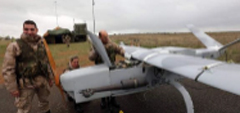
In the short term, great part of the processes and intelligence flow will be automatised with artificial intelligence technologies of new generations, where in the mid-long term, the solution will be autonomous processes and flows with artificial intelligence of more advanced generations.
Fires. ‘35 Brigade’ will be able to integrate joint fires, which will include the need for joint terminal attack controllers at a Tactical Group level or inferior. These will contribute to the air space management, activity of increasing importance due to the worrying congestion of means.
‘35 Brigade’ will have 3 firing units of 40-50 km reach, as well as a rocket centralised unit with 120-140 km reach. Intelligent ammunition will beat targets within the necessary reach with impeccable precision.
Logistical support. Before the traditional reactive logistics, the logistical support of ‘35 Brigade’ will be capable of anticipating the needs thanks to sensorisation, treatment of data supported on artificial intelligence, networking, real-time monitoring of flows of resources and logistical activities or availability of personnel expert in analysis and interpretation of logistical data.
The possibilities offered by robotisation and automatisation of ‘35 Brigade’ will reduce the number of personnel required for certain operations such as vehicle driving or load preparation and management. Remote and autonomous systems will be both land and aerial.
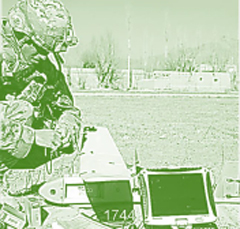
For its part, additive manufacturing will allow the obtention of certain spare parts when transportation times are excessive, as well as manufacturing of certain component to carry out battle damage repair in the vanguard.
Dispersion of units, together will difficulty of evacuation and need to reduce leaves, will oblige to have greater stabilisation capacities in the vanguard. This will involve the specialisation of both medical and non-medical personnel.
Protection.The aerial threat field that will affect ‘35 Brigade’ will extend from traditional aircraft and helicopters, RPAS and slow movers, to rockets, mortars, artillery projectiles and all kind of missiles, turning into a threat for the protection of the force.
The contribution of Anti-aircraft Defence of ‘35 Brigade’ will materialise in the organisation of four Anti-aircraft Defence units and the contribution to the airspace management at the Brigade and Combat Group levels. Each unit will have systems of weapons with capacity in the whole spectrum of the threat. The Combat Group, at low and very low height, will have a dual missile system (9-10 km y 6 km respectively), dual system with automatic cannon (5000 metres) and directed energy (5000 metres), electromagnetic interference system against RPAS. To minimise systems and logistical print, the Brigade will incorporate different capacities in models of mixed cannon and missile platforms.
Deception and physical and virtual concealment will be essential elements to guarantee surveillance and protection, and to mitigate the risk in the mission.
The electronic war actions and the operations in cyberspace will be increasingly related, as they use the same domains. Cyberthreats will try to take advantage of the hyperconnectivity of networks, platforms and autonomous systems, attacking their possible technological vulnerabilities.
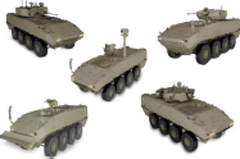
Manoeuvring.The mobility and autonomy of 8x8 wheeled Dragon combat vehicles will permit units to act spread in more points, as well as reunite quickly to concentrate effects, allowing them to take missions in the most demanding settings.
In urban areas the enemy will be fought in all the dimensions of the city, specially underground, so the units must be specifically prepared for this environment and be provided with the adequate means to accomplished the missions, such as the on foot-combatant system (SISCAP).
The need to operate in settings where the population is the cognitive target involves the need to graduate the use of force at all levels, so that every unit can materialise non-lethal effects if demanded by the situation, and interoperate, help or act in cooperation with local forces that need to be reinforced.
It will still be necessary the capacity to combat disembarked with enough autonomy and firepower, so the incorporation of autonomous platforms (robotics) to support this kind of combat will be crucial.
In future conflicts it will be key to integrate the air-terrestrial manoeuvre with the manoeuvre in the information field. For that purpose, the land forces will have specific units to reach an advantageous position with information activities.
The organic structures of Information Operations, together with those of EW, Cyber and Social Communication will facilitate the necessary teams to materialise the information manoeuvre at the Brigade and Combat Group levels by means of transversal teams.
7.- CONCLUSIONS
‘Fuerza 35’ needs to comply with those missions assigned today and forecasted for tomorrow. It must evolve to adapt to the fast technological changes, thus providing land forces of higher quality to the Joint Force and being able to operate with the allies and against the potential enemies.
The future of war will be very complex, hyperactive and lethal, with sensors present everywhere and in continuous movement, so our ‘Fuerza 35’, once deployed in the Theatre of Operations, will need to be very well equipped to move quickly.

The articulation of ‘Fuerza 35’ will constitute a structural change of mentality, a deep cultural change.
This new ‘Fuerza 35’ of expeditionary nature will allow us to conduct multidomain operations very dynamically. It will be made up of land forces ready to enter into contact in very advanced spaces (35 Brigades) and other strong forces right after contact forces (rest of ‘Fuerza 35).
The articulation of ‘Fuerza 35’ will constitute a radical change at different levels, namely, doctrine, organic structure, system, training centres and specially, leadership development. That is to say, a structural change, not exclusively affecting materials and latest technologies, that will constitute a structural change of mentality, a deep cultural change.
In order to undertake the transforming impulse, it becomes necessary to experiment new concepts. This will allow us to put into practice a new approach to ‘35 Brigade’ and draw conclusions that will guide the experimentation stage that will last for the whole 2019.
Despite the changes we are going through, the centre of gravity of the Army will still be the fighter. Machines will help humans in some functions, but they will not replace them. It will be key to maximise the human resources of land forces, grab and retain talent and implement a new form of leadership, making the leader grow.
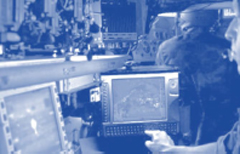
The centre of gravity of the Army will still be the fighter.
There is a need to create a 'sense of urgency culture' to bring about changes at the pace set by society, conditioned by the continuous appearance of technological innovations. The implementation of a new 'speed of operation' present in all processes is required. That will affect acquisition, decision-making, operation-executing processes, as well as use of force concepts and organic and operative structures.
There is a need to create a 'sense of urgency culture' to bring about changes. The implementation of a new 'speed of operation' present in all processes is required.
ARMY UNITS
- Araba Álava |
- Albacete |
- Alicante |
- Almería |
- Asturias |
- Ávila |
- Badajoz |
- Barcelona |
- Burgos |
- Cáceres |
- Cádiz |
- Cantabria |
- Castellón |
- Ceuta |
- Ciudad Real |
- Córdoba |
- A Coruña |
- Cuenca |
- Girona |
- Granada |
- Guadalajara |
- Gipuzkoa |
- Huelva |
- Huesca |
- Islas Baleares |
- Jaén |
- León |
- Lleida |
- Lugo |
- Madrid |
- Málaga |
- Melilla |
- Murcia |
- Navarra |
- Ourense |
- Palencia |
- Las Palmas |
- Pontevedra |
- La Rioja |
- Salamanca |
- Segovia |
- Sevilla |
- Soria |
- Tarragona |
- Santa Cruz de Tenerife |
- Teruel |
- Toledo |
- Valencia |
- Valladolid |
- Bizkaia |
- Zamora |
- Zaragoza



